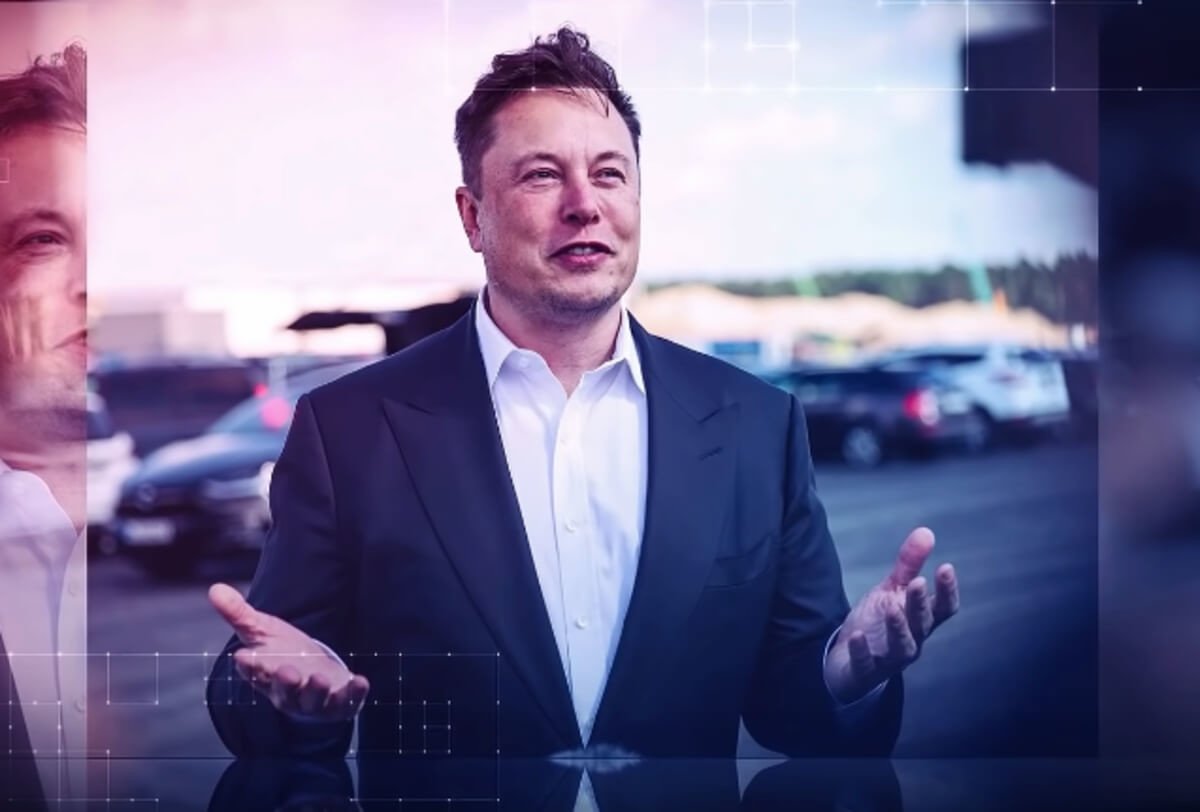Here’s What Elon Musk Gets Wrong About Bitcoin and Dogecoin

Recently, serial entrepreneur Elon Musk of Tesla and SpaceX fame reiterated his support for Dogecoin (DOGE) on Twitter and during an interview with Bloomberg at the Qatar Economic Forum. Despite the fact that the meme-based cryptocurrency has dropped from an all-time high of USD 0.76 to a current price of around USD 0.08 since Musk touted the altcoin on Saturday Night Live on May 2021 and he’s currently facing a USD 258bn lawsuit that alleges the whole thing was nothing more than a pyramid scheme, the Tesla and SpaceX CEO told Bloomberg:
“I just know a lot of people who are not that wealthy who, you know, have encouraged me to buy and support Dogecoin. I’m responding to those people.”
Also, in December 2021, Musk made the case for Dogecoin as a better alternative to Bitcoin (BTC) during an interview with MIT Research Scientist and podcast host Lex Fridman. In Musk’s view, greater on-chain capacity (leading to lower transaction fees) and perpetual inflation are two key features that give Dogecoin an edge over Bitcoin.
“[Dogecoin] actually does have a much higher transaction volume capability than Bitcoin, and the cost of doing a transaction, the Dogecoin fee, is very low,” said Musk. “Right now, if you wanted to do a Bitcoin transaction, the price of doing that transaction is very high. So, you could not use it effectively for most things.”
In terms of the differing monetary policies between Bitcoin and Dogecoin, Musk indicated that an issuance rate that is too low would lead to hoarding and disincentivize spending. In Bitcoin, the issuance rate is cut in half roughly every four years, while Dogecoin has a flat issuance rate that does not change.
While Musk has become one of the most prominent influencers in the crypto markets over the past couple of years, both of these points made regarding Dogecoin’s supposed benefits over Bitcoin do not hold up to the slightest bit of scrutiny.
Don’t compare Dogecoin to Bitcoin’s base chain
Musk is correct in his claim that Dogecoin can handle many more transactions per second than Bitcoin at the base layer, but comparing the on-chain transaction costs of Bitcoin and Dogecoin is not a useful exercise.
The Bitcoin network is being developed via a multi-layer approach that allows users to opt into secondary layers, such as the Lightning Network, to enable much faster and cheaper transactions. In fact, the transactions on the Lightning Network are faster and cheaper than what is currently possible on Dogecoin, while also retaining a relatively high degree of decentralization. Fees for Bitcoin Lightning Network transactions tend to be a fraction of a penny and approach zero, while median Dogecoin transaction fees were over USD 0.10 as recently as last month and over USD 0.40 late last year (fees have recently collapsed to under USD 0.01 alongside the Dogecoin price).
It should be noted that the higher transaction costs on Dogecoin have mostly been caused by higher-than-needed default fee settings in wallet software and at exchanges. Dogecoin’s median transaction fees could decline further if developers and exchanges implement lower fee settings for their users, but in the long run, keeping a record of all transactions on the base blockchain layer will be more expensive than a layer-two system like the Lightning Network, lead to centralization pressures due to the increased costs of operating a full node, or both.
On-chain Bitcoin transactions enable the highest degree of censorship resistance for value transfers in the digital realm, but the reality is this extreme level of decentralization is not needed on every transaction.
For this reason, it makes sense for Bitcoin to take a layered approach to scaling where separate, upper-layer protocols can be used for specific types of transactions.
For example, the Lightning Network enables faster, cheaper payments for everyday transactions, the Liquid sidechain enables new features on a federated sidechain with faster block times, RSK allows for bitcoin to be used to pay for gas on a federated sidechain that is compatible with the Ethereum Virtual Machine (EVM), and federation-backed Chaumian banks, such as Minimint, can enable improved privacy for instant, Lightning-esque payments.
With Dogecoin’s focus on low-cost payments, it would be best to compare the meme-based cryptocurrency with the Lightning Network rather than on-chain Bitcoin transactions, as these two networks are operating in the same niche. Musk touts the transaction capacity of Dogecoin, but the number of transactions that can be processed by the Lightning Network is effectively limitless, as there is no cap on the number of payments that can be made once a user has a channel open on the secondary payment protocol.
Additionally, the ability to transact with peers directly rather than interacting with a costly, inefficient blockchain leads to much lower transaction costs. That said, it should be noted that there is still a scaling limitation here based around users rather than transactions, as users must be able to make at least one on-chain transaction to join the Lightning Network.
Data shows Bitcoin’s Lightning Network is catching up to Dogecoin
The data shows Bitcoin’s secondary protocol layers, which are still in the early stages of development, are already more active than Dogecoin. And the reasons behind this reality should be obvious. If you can get the key feature of Dogecoin, namely fast and cheap payments, with the relative stability of BTC (at least when compared to other cryptocurrencies), then it would make sense to opt for that approach.
According to the most recent available data, Bitcoin’s Lightning Network alone may have already surpassed Dogecoin in terms of payment activity. In April, Arcane Research put out their second report on the Lightning Network, and it indicated that Bitcoin’s payments layer had accounted for more than 800,000 transactions in the month of February. This is roughly double the number of Lightning Network transactions made in February of 2021. More recently, Breez Technology CEO Roy Sheinfeld revealed that his company alone is doing 200,000 to 300,000 Lightning transactions per month, which indicates even more growth may have taken place since February.
According to data from Coin Metrics, the Dogecoin network was processing roughly 30,000 transactions per day in February, which would amount to a little under 870,000 transactions for the month. However, Dogecoin’s transfers per day, which is a metric that attempts to find multiple payments in the same on-chain transaction, was around 83,500.
This would put Dogecoin’s monthly payments count at around 2.4 million. That said, these numbers are roughly the same as they were in February 2021.
Of course, comparing payment activity on Bitcoin’s Lightning Network to Dogecoin’s on-chain activity is far from an exact science for a variety of reasons. For one, Lightning Network activity happens off-chain, which means it’s much more difficult to collect the relevant data. So, for example, Arcane Research relies on third-party reporting for their data. However, more direct comparisons can be made with data from specific merchants. In the case of both Coincards and Bitrefill, the most recent data shows Bitcoin’s Lightning Network accounts for more activity than Dogecoin on a monthly basis.
Furthermore, the transactions on the Lightning Network are much more likely than on-chain transactions to be real-world payments, as exchange adoption of this Bitcoin layer-two technology is still low. According to the aforementioned report from Arcane Research, around half of Lightning Network transactions fall under the category of micro rewards or gaming. There are a number of Lightning-enabled games and apps that reward their users in small units of bitcoin, known as satoshis, and this is where a lot of the activity takes place today.
While Musk has talked about certain types of transactions being priced out of the Bitcoin network due to high fees, the reality is the small amount of satoshis transferred as gaming rewards via the Lightning Network would be uneconomical on Dogecoin at scale.
It should also be noted that the base Bitcoin network dwarfs both the Lightning Network and Dogecoin when it comes to transactions, processing around 250,000 transactions and 800,000 transfers per day.
The supposed benefits of Dogecoin’s monetary policy
In terms of Musk’s comments on the benefits of Dogecoin’s alternative monetary policy, the reality is market participants are not going to prefer to hold a more inflationary asset, even if it hypothetically would be more beneficial for the overall economy. In general, people act in their own self-interest, not for the common good.
Additionally, Dogecoin’s monetary policy becomes increasingly deflationary over time anyway, as the issuance rate per block is a set number rather than a percentage of the current supply. In other words, the theoretically-negative talking points regarding Bitcoin’s deflationary monetary policy also apply to Dogecoin. Of course, Dogecoin governance is so centralized at this point that Musk could likely push through a change to the monetary policy without much pushback. However, the ability for the issuance rate to change makes the policy less credible and therefore less interesting as an investable asset.
With all of this in mind, perhaps the only real advantage of Dogecoin is that its logo has a dog on it.
_____
Learn more:
– Another Elon Musk-fueled DOGE Rally Ends With a Dump
– Popular Meme Coin Dogecoin Used in ‘Most Serious’ Crimes
– Elon Musk Should Listen to Cathie Wood on Bitcoin
– Bitcoin On-Chain Metrics Strongest Among Peers – Kraken
– As Bitcoin Scales With Lightning Network, What Role Does Litecoin Have to Play?
– Don’t Fear the Reaper: Why the Market Downtrend Is Good for Crypto




